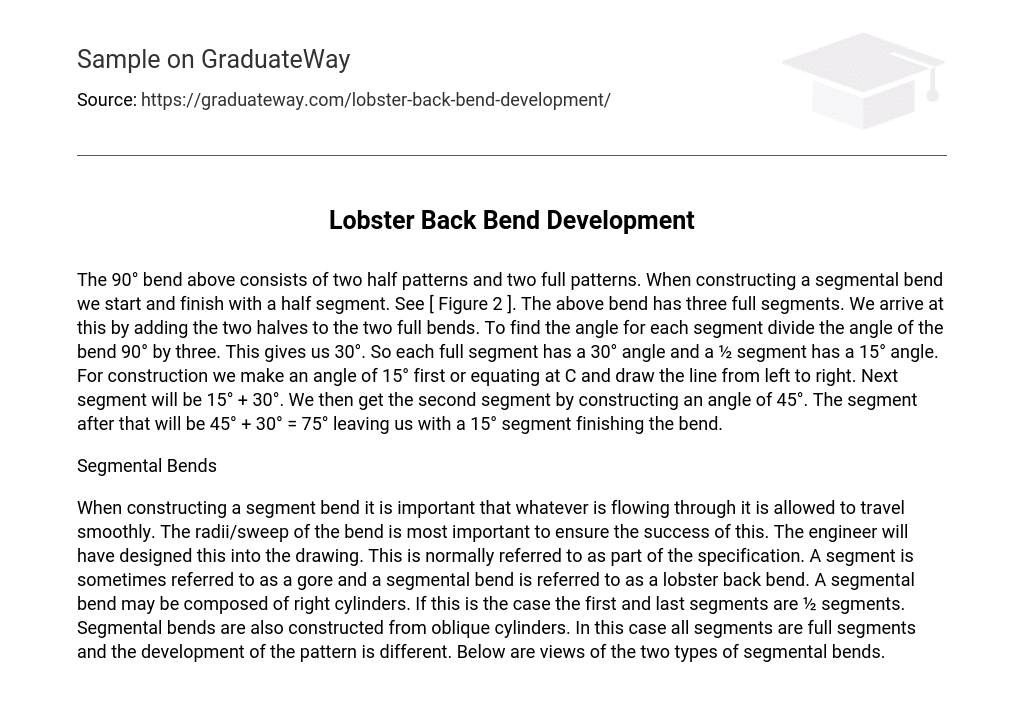The above bend consists of two half patterns and two full patterns. To construct a segmental bend, we begin and end with a half segment (refer to Figure 2). The above bend has three full segments, achieved by adding the two halves to the two full bends. To determine the angle for each segment, we divide the bend’s 90° angle by three, giving us 30°. Therefore, each full segment has a 30° angle, and a ½ segment has a 15° angle. For construction, we first create an angle of 15° at point C and draw the line from left to right. The next segment will be 15° + 30°, resulting in a 45° angle. We then construct an angle of 45° to obtain the second segment. The following segment will be 45° + 30° = 75°, leaving us with a final 15° segment to complete the bend.
Segmental Bends
When creating a segment bend, it is crucial to ensure that the flow of whatever is passing through it is unimpeded. The most critical aspect in achieving this is the radii or sweep of the bend. The engineer responsible for the design will include this in the drawing as part of the specification. A segment is sometimes referred to as a gore, while a segmental bend is known as a lobster back bend. Segmental bends can consist of right cylinders, with the first and last segments being half segments. Alternatively, oblique cylinders can be used to construct segmental bends, in which case all segments are full segments and the development of the pattern differs. The following images illustrate the two types of segmental bends.





